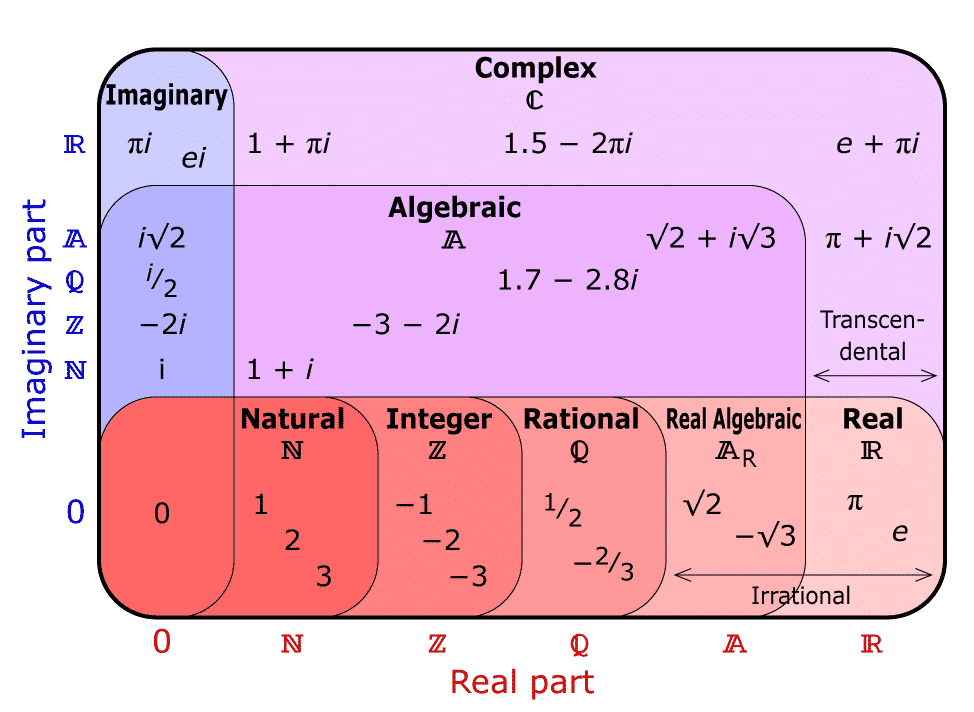In the world of mathematics, the set of numbers forms the foundation of not just mathematical theory, but of the logic and precision that drive our understanding of the universe. It’s a fundamental concept that underpins everything from basic arithmetic to complex calculus, yet it’s a topic that can often seem daunting to both students and educators. This is where Keith Enevoldsen steps in, transforming confusion into clarity with his beautifully crafted diagram of the set of numbers.
Keith Enevoldsen, a thinker and visual communicator, has done something remarkable. He has taken the abstract, often perplexing set of numbers and laid it out in a diagram that’s not just easy to understand but is a pleasure to explore. This visual representation is more than just a teaching tool; it’s a bridge connecting learners to the core of mathematical thought, making accessible what was once considered challenging.
The value of this diagram lies in its simplicity and comprehensiveness. Enevoldsen carefully arranges the major sets of numbers – from the most intuitive, like natural numbers, through to whole numbers, integers, rational numbers, real numbers, and beyond – into a format that makes their relationships and properties immediately apparent. For educators struggling to demystify number sets for their students, Enevoldsen’s diagram offers a lifeline that can transform their teaching approach.
Enhancing Understanding Through Visual Learning
What makes Enevoldsen’s work stand out is its embodiment of visual learning principles. Visual learning, the process of learning using images, diagrams, and animations, is known for enhancing comprehension and retention. Students can grasp complex concepts more swiftly when they’re illustrated, and teachers find it easier to explain and reinforce lessons when they have visual aids at their disposal.
By presenting the set of numbers in a visual format, Enevoldsen taps into this potent learning mechanism. Students of all ages can benefit from this diagram, whether they’re being introduced to the concept for the first time or they need a refresher on how these sets interact and overlap. It’s a testament to how design and education can come together to break down barriers in learning.
But why stop at understanding the set of numbers? Keith Enevoldsen’s diagram doesn’t just clarify; it invites curiosity. It’s a jumping-off point for deeper exploration into set theory and other mathematical areas. For those inspired to take this leap, “Naive Set Theory” by Paul Halmos comes highly recommended. Halmos’ work is accessible yet profound, offering an excellent next step for anyone energized by Enevoldsen’s diagram to deepen their mathematical understanding.

Enevoldsen and Halmos, in their respective mediums, serve as guides in the vast world of mathematics. The former, through his engaging visual representation, and the latter, through his eloquent explanation of set theory, provide invaluable resources for learners seeking to traverse the complex landscape of numbers and sets.
Keith Enevoldsen’s diagram of the set of numbers is more than just an educational tool; it’s a work of art that captures the elegance and interconnectedness of mathematical concepts. For math educators and students, it presents an unmatched opportunity to transform how they engage with the fundamentals of math, making the abstract tangible and the complicated straightforward.
In the realm of mathematics education, where clarity can be elusive, and engagement can sometimes wane, resources like Enevoldsen’s diagram are treasures. They remind us that with creativity and insight, learning can be a visually engaging, intellectually stimulating, and thoroughly enjoyable adventure.
Whether you’re a math educator looking to inspire your students or a learner seeking to demystify number sets, Enevoldsen’s diagram and Halmos’ guide to set theory are your companions on this enlightening journey. Unveil the beauty of mathematics to yourself and others, and discover just how engaging and clear the subject can be.














